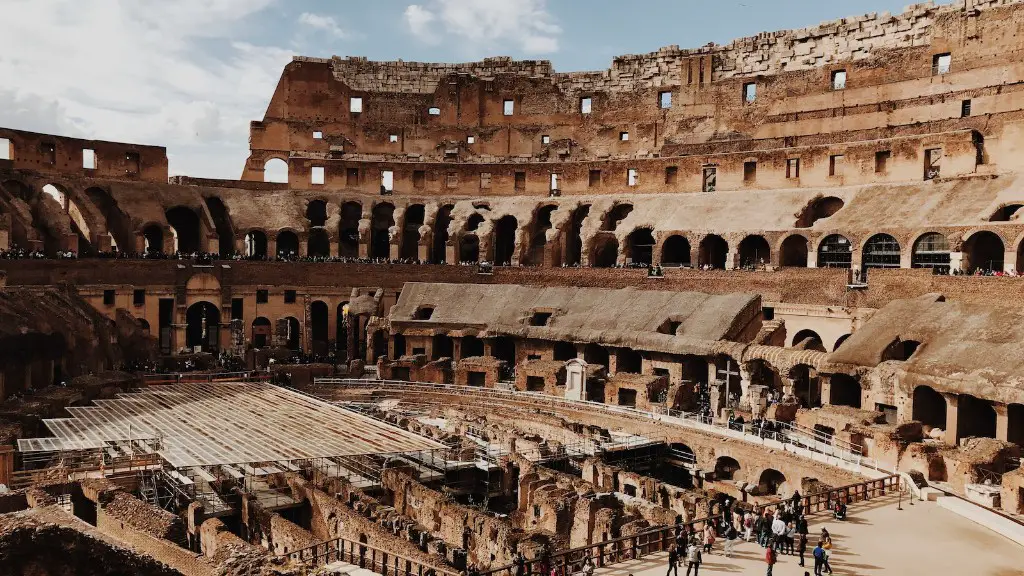Background Information on Slavery in Ancient Rome
The history of slavery in Ancient Rome dates back to the 7th century BC, when the city-state of Rome began to expand beyond its settlement. Slaves were initially used as slave labor and as household servants, but soon grew to become a valuable commodity and an integral part of the economy. From the height of its imperial rule, Ancient Rome was responsible for enslaving millions of people for a variety of reasons.
Slaves were typically acquired through a variety of methods, including warfare, trade, or purchase, with the enslaved individuals coming from throughout the Mediterranean region. A wide range of trades, such as farming, manufacturing, and labor, utilized enslaved individuals in the Roman Empire. They provided essential labor to the economy and represented a major component of the imperial budget.
Due to their value, slaves were often given certain rights and privileges, and some even gained freedom through manumission. Manumission was a process permitting the enslaved man or woman to purchase or earn freedom. The methods of freeing slaves varied and was dependent on the will of the slave’s master. In some cases, a slave was able to earn money to purchase his freedom, or even be granted it by his master. Manumission became increasingly more frequent during the later days of the Roman Empire, though the majority of slaves were never free.
Freedman in Ancient Rome
Freedmen were formerly enslaved individual who had earned or been granted freedom. They were prominent in the Roman Empire and were accepted in society more readily as the centuries passed. They were able to secure positions that were previously not available to them as slaves, such as that of civil service. Freedmen were able to serve in the army, pay taxes and even own property. They were officially recognized by the state and provided with certain rights, such as protection from abuse by their former masters.
The number of freedmen grew in the later days of the Roman Empire, and by the 2nd century AD, when slavery had become an increasingly controversial subject, it is estimated that there were around 200,000 of them. The growing number of freedman granted Roman citizens rights, privileges, and protection that was previously only available to the ruling elite.
Freedmen were largely responsible for the cultural, religious and political development of the later Roman Empire. They provided valuable contributions to their society, forming secular and religious polemics, writing philosophical and scientific treatises and even coding the Roman law. Through their work the Roman culture reached its pinnacle in the 2nd and 3rd centuries AD.
When Were Slaves Freed in Ancient Rome?
When were slaves freed in Ancient Rome? The Roman Republic abolished slavery in the year 326 BC, but enslaved individuals still remained throughout the Roman world. In the later days of the empire, the prevalence of manumission increased, likely due to the societal implications and limitations imposed by the institution of slavery, and it’s estimated that by the 4th and 5th century AD there were over one million slaves in the empire.
The freeing of slaves in Ancient Rome was largely due to the implementation of Roman Law. The Orthodox Code of Justinian, a 5th century compilation of Roman laws, laid out strict regulations on manumission and specified how freed men and women should be treated and compensated for their work. These laws were designed to protect the newly freed slaves from exploitation and abuse.
The gradual decline and eventual downfall of the Roman Empire in the 5th century AD saw the freeing of even more slaves. The weakening of the state meant that there were less economic incentives to own slaves, and as a result, more and more individuals were granted their freedom. The freeing of so many individuals meant that large portions of the Roman society were no longer composed of enslaved workers, and it is thought that freedmen contributed to the decline of the empire.
Social and Economic Implications of Slavery in Ancient Rome
The institution of slavery in Ancient Rome had profound social and economic consequences. Slaves were responsible for providing essential labor that enabled the empire to grow in size and status, but their lack of freedom curtailed their potential contributions to society. Unfree labor reduced wages for free men, and many citizens saw slavery as a moral affront to the societal fabric.
Slavery in Rome was further complicated by the exploitation of slaves, the reliance of slaves for tax income, and the legal and cultural stigma of slavery. Slaves were often mistreated and abused by their masters, and their children sometimes sold into slavery if born to a slave. Marriages between slaves was made illegal, and as a result, familial relationships were complex and often fractured.
Furthermore, the economic system of Rome was heavily reliant on slave labor. Slaves often provided the labor to build monuments, roads, and other public works. Tax income was generated through labor supplied by slaves, often driven to exhaustion by their masters. When slavery in Rome was abolished, the state was unable to replace this income through free labor, and it is thought that this played a major role in the decline of the Roman Empire.
Christianity and Slavery in Ancient Rome
Christianity initially discouraged the practice of slavery, with many early Christian authorities condemning its use. That changed with the conversion of Emperor Constantine in the 4th century AD, when the spread of Christianity saw an increased acceptance of slavery. Early Christian writers argued that slavery was an acceptable part of society, and that it was permitted under certain circumstances.
Christianity encouraged the practice of manumission, and as a result, many slaves were freed. This is evidenced by the letter sent by Pope Gregory I in the 6th century AD, ordering the release of Christian slaves by their masters. He also offered financial compensation for masters who released their slaves, and many followed his instructions.
Although Christianity eventually reconciled itself with slavery, there were many occasions when Christian authority opposed it. It is thought that the unstable support for slavery caused by the Church added to the gradual decline of slavery in the Roman Empire. The undermining and destabilization of the slave economy was an important factor in its eventual downfall.
Slavery and Its Legacies in Ancient Rome
The institution of slavery in Ancient Rome was an integral part of the society, allowing it to grow and flourish, no matter how morally controversial. Slaves played a vital role in the economy and provided essential labor that enabled the Roman Empire to surpass the surrounding societies in terms of power, wealth and influence. The freeing of slaves was an important factor in the decline of the empire, and their contributions to the economic and cultural fabric of Rome are undeniable.
The legacy of slavery in Ancient Rome is still felt today. The moral implications of slave labor and its devastating consequences, both personally and economically, are still debated in the modern-day. Although slavery has long been abolished, its legacy can still be seen in the political and economic systems of a number of countries, with slavery still present in a number of them.
The Experience of Being a Slave in Ancient Rome
Being a slave in Ancient Rome was a daunting experience. Slaves were bought and sold like any other commodity and were frequently mistreated by their masters. They were forced to work long hours in deplorable conditions, under the constant threat of physical and emotional abuse and in some cases, even death. If a slave managed to survive the brutality of their master, there was still no guarantee of security, as it was common to be sold or traded away to a new master without warning.
Slaves in Ancient Rome were also socially and culturally ostracized. Marriages between slaves were forbidden and sexual relationships and bearing children were strictly regulated. Slaves were rarely allowed to practice their own cultural and religious practices and were often denied any form of education or leisure time. It is estimated that the majority of individuals born into slavery died as slaves, unable to escape the confines of their servitude.
Conclusion
Slavery in Ancient Rome was an integral part of the society, enabling their prodigious advancement in terms of culture and wealth. Although slaves were provided with certain rights, such as that of manumission, it was still a brutal and dehumanizing practice. The freeing of slaves was an important factor in the decline of the Roman Empire, and their contributions to the economic and cultural fabric of Rome are undeniable. The legacy of slavery in Ancient Rome can still be felt today, a grim reminder of the injustices that were inflicted on a countless number of individuals.





